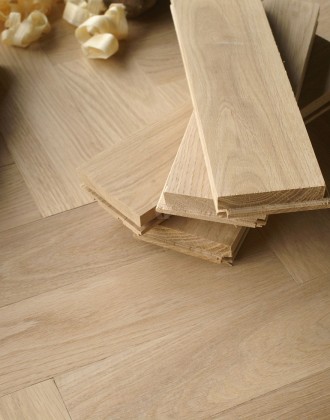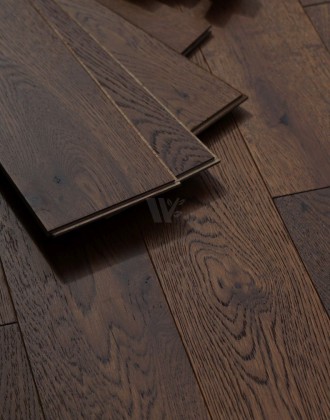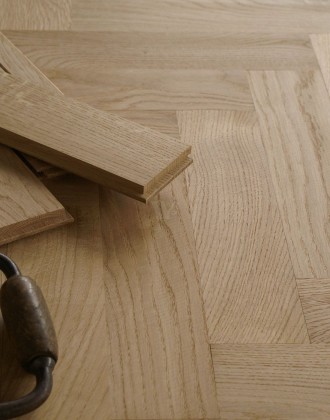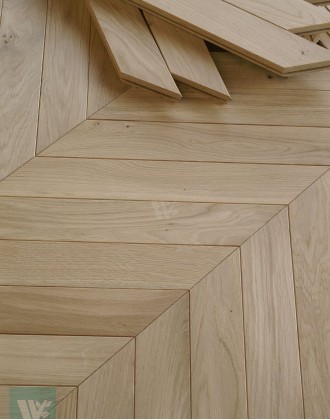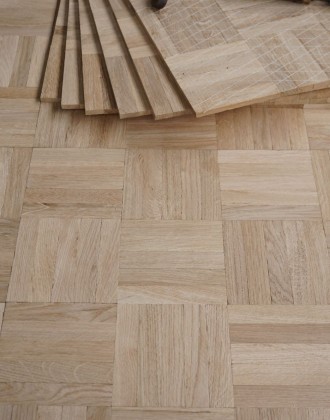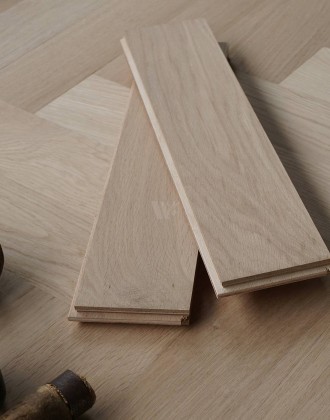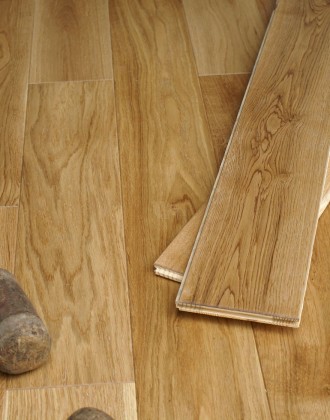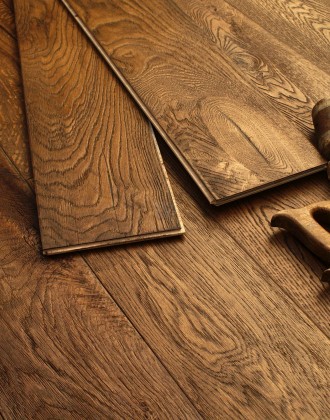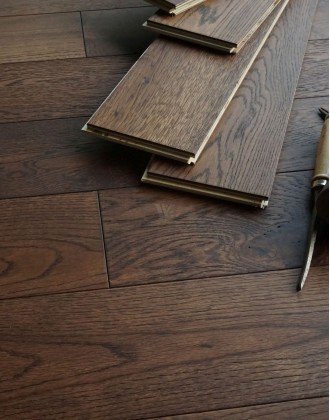European Oak
European oak, also known as English oak or pedunculate oak (Quercus robur), is a popular wood species that is native to most of Europe and parts of Asia. It is a hardwood that is widely used in furniture making, flooring, construction, and decorative applications.
Color: The heartwood of European oak is light
to medium brown, often with a grayish or olive cast. The sapwood is usually lighter in color and can be up to 4
inches wide.
Grain: European oak has a straight and coarse grain, which is often interlocked.
The texture is medium to coarse, with a pronounced ray figure that gives the wood a distinctive look.
Density: European oak is a dense hardwood, with an average density of about 45 pounds per cubic foot (720 kg/m3).
This density makes it durable and resistant to wear and tear.
Durability: European oak is highly resistant
to decay, insect attack, and rot. It is also relatively stable and does not shrink or swell much with changes in moisture
content.
Workability: European oak is moderately easy to work with, although its high density can make it
challenging to cut and machine. It sands and finishes well, and takes stains and finishes evenly.
Uses:
European oak is used for a wide range of applications, including flooring, cabinetry, furniture, veneer, and decorative
items such as paneling and moldings. Its durability and resistance to decay also make it a popular choice for outdoor
construction, such as decking and timber framing.
Overall, European oak is a versatile and attractive wood
species that offers durability, stability, and a unique aesthetic appeal.

European oak, also known as English oak or pedunculate oak (Quercus robur), is a popular wood species that is native to most of Europe and parts of Asia. It is a hardwood that is widely used in furniture making, flooring, construction, and decorative applications.
Color: The heartwood of European oak is light
to medium brown, often with a grayish or olive cast. The sapwood is usually lighter in color and can be up to 4
inches wide.
Grain: European oak has a straight and coarse grain, which is often interlocked.
The texture is medium to coarse, with a pronounced ray figure that gives the wood a distinctive look.
Density: European oak is a dense hardwood, with an average density of about 45 pounds per cubic foot (720 kg/m3).
This density makes it durable and resistant to wear and tear.
Durability: European oak is highly resistant
to decay, insect attack, and rot. It is also relatively stable and does not shrink or swell much with changes in moisture
content.
Workability: European oak is moderately easy to work with, although its high density can make it
challenging to cut and machine. It sands and finishes well, and takes stains and finishes evenly.
Uses:
European oak is used for a wide range of applications, including flooring, cabinetry, furniture, veneer, and decorative
items such as paneling and moldings. Its durability and resistance to decay also make it a popular choice for outdoor
construction, such as decking and timber framing.
Overall, European oak is a versatile and attractive wood
species that offers durability, stability, and a unique aesthetic appeal.
10" Prime Oak Herringbone H25P
250x70x22 Massive Parquet
Prime Grade (clean wood) herringbone parquet flooring. Solid real oak with thickest 12mm resandable layer above T&G!. Premium quality blocks easy ..
£50.40/sqm Ex Tax: £42.00
6" Dark Oak Brushed Matt EC1S
150mm Wide Brushed Wood Finish
Dark brown finish real oak wood flooring. 10mm thick - low profile- perfect for carpet replacement without adjusting doors, skirting etc. Suitable for..
£34.80/sqm Ex Tax: £29.00
12" Prime Oak Herringbone HS43
300x70x16 Traditional Parquet
Classic-sized (1 ft long) solid oak parquet flooring with an unfinished surface, ready to be sealed after fitting and a light sand. Premium quality, e..
£45.60/sqm £51.60 Ex Tax: £38.00
17" French Chevron Natural V72N
426x70x22 Traditional Zig-Zag
45deg cut French Style chevron parquet flooring made of solid oak wood - 100% natural product. V-shaped pattern perfect for stylish interiors. 22mm th..
£88.80/sqm Ex Tax: £74.00
5 Finger Mosaic Oak OV5P
480x480mm Square Tiles
Classic Solid Oak mosaic parquet flooring. Pure European Oak wood mosaics made out of 120x24x8mm individual blocks assembled in 5 finger squares on me..
£48.00/sqm Ex Tax: £40.00
40CM Unfinished Prime Oak EC9P
400x90x18 Premium Oak Parquet
Prime Grade Oak engineered parquet flooring with unfinished presanded surface, ready for oil or other colour application. Suitable for use with underf..
£54.00/sqm Ex Tax: £45.00
5" Brushed & Matt Lac Oak ECH5
125mm Wide Plank Floooring
Real Oak wood flooring in classic 5 inch wide board. Solid-engineered construction (Solid wood base + solid wood crosswise core + solid Oak top) suita..
£38.40/sqm Ex Tax: £32.00
7½" Distressed Antique Oak EC33
190mm Wide Medium Brown Oiled Planks
Very rustic looking engineered oak flooring. 14mm thick construction makes if perfect for use over UFH heated floors. Distressed surface with exposed ..
£54.00/sqm Ex Tax: £45.00
5" Brushed & Smoked Oak EC54
125mm Wide Dark Wood Planks
Dark chocolate real wood oak flooring finished with durable matt lacquer. Outstanding quality and real authentic wood flooring. 5 inch wide boards - v..
£38.40/sqm Ex Tax: £32.00

